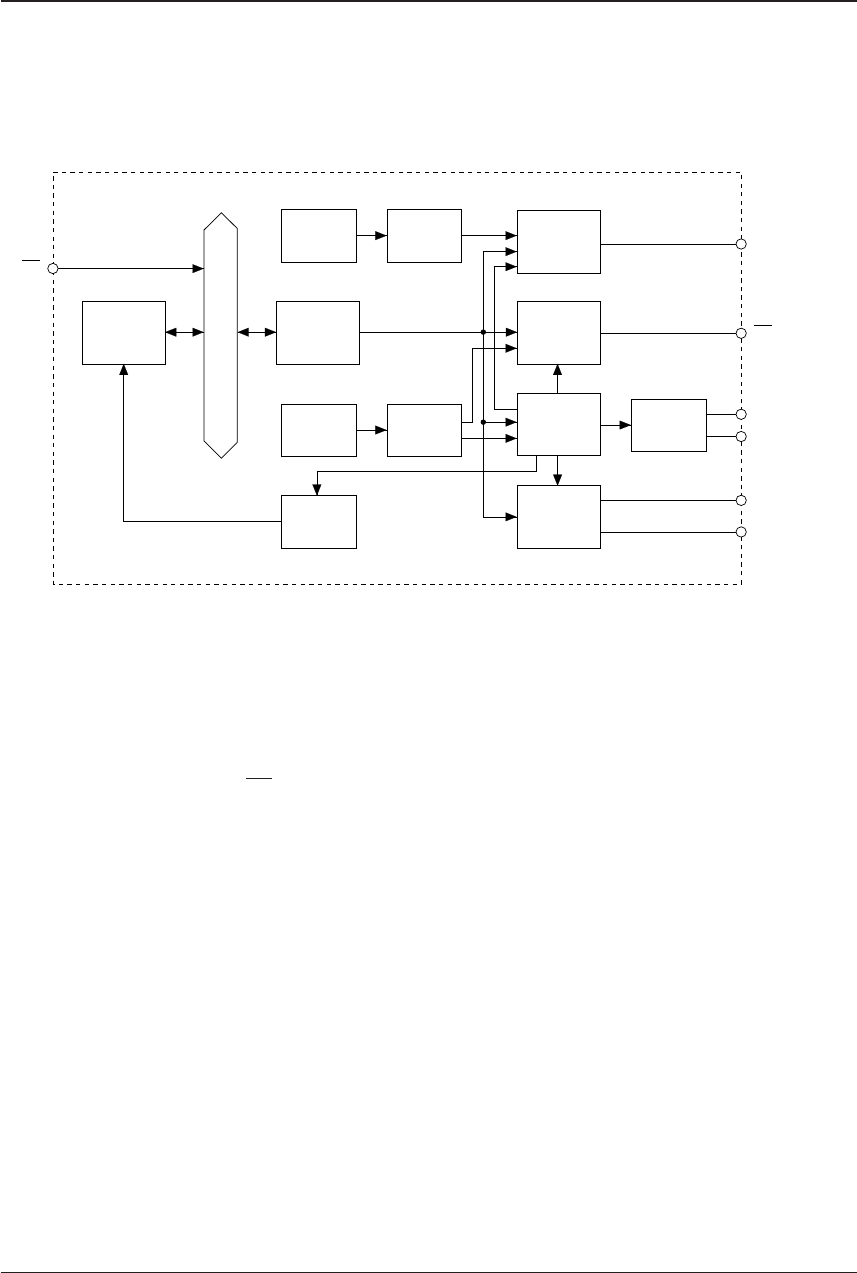
112 EPSON S1C63558 TECHNICAL MANUAL
CHAPTER 4: PERIPHERAL CIRCUITS AND OPERATION (Telephone Function)
4.14 Telephone Function (Tone/Pulse Dialer)
4.14.1 Configuration of tone/pulse dialer
The S1C63558 has a telephone function built-in. This function includes DTMF (Dual Tone Multi-Fre-
quency), DP (Dialing pulse), Pause, Flash, Hold-line, Mute control, Hook switch control and Handfree
control.
The configuration of the telephone function is shown in Figure 4.14.1.1.
Data bus
3.58 MHz
oscillator
Frequency
divider
Control
registers
DP
generator
Telephone
timing
generator
Mute
generator
DTMF
generator
32 kHz
oscillator
Frequency
divider
Interrupt
circuit
R12, R13
registers
CPU
TONE
DP
HFO (R13)
HDO (R12)
XTMUTE (R10)
XRMUTE (R11)
HS
(Kxx)
Fig. 4.14.1.1 Configuration of tone/pulse dialer
This dialer has built-in a DTMF generator for generating tones and a DP generator for generating dial
pulses.
Either DTMF mode or DP mode can be selected by software.
In the DTMF mode, the DTMF generator uses the OSC3 (3.58 MHz) clock to generate the tone signal set
by software (signal tone or dual tone) and outputs it to the TONE terminal.
In the DP mode, the DP generator uses the OSC1 (32 kHz) clock to generate the dial pulses for the
number set by software to the DP terminal.
The push button matrix is configured using the input and output ports. The hook switch should be
connected to an input port. The hook switch can be controlled by software, this makes it possible to start
calling even if the telephone is on-hook.
Besides the above terminals, The R10 to R13 terminals can be used as an XTMUTE (transmitter mute
signal output), XRMUTE (receiver mute signal output), HDO (hold line signal output) and HFO (hand
free signal output). These terminal functions can be configured by software. (See Section 4.5, "Output
Port".)
This dialer has a built-in interrupt circuit that can generate an interrupt when execution of a dial signal
output, a pause function or a flash function is completed.


















